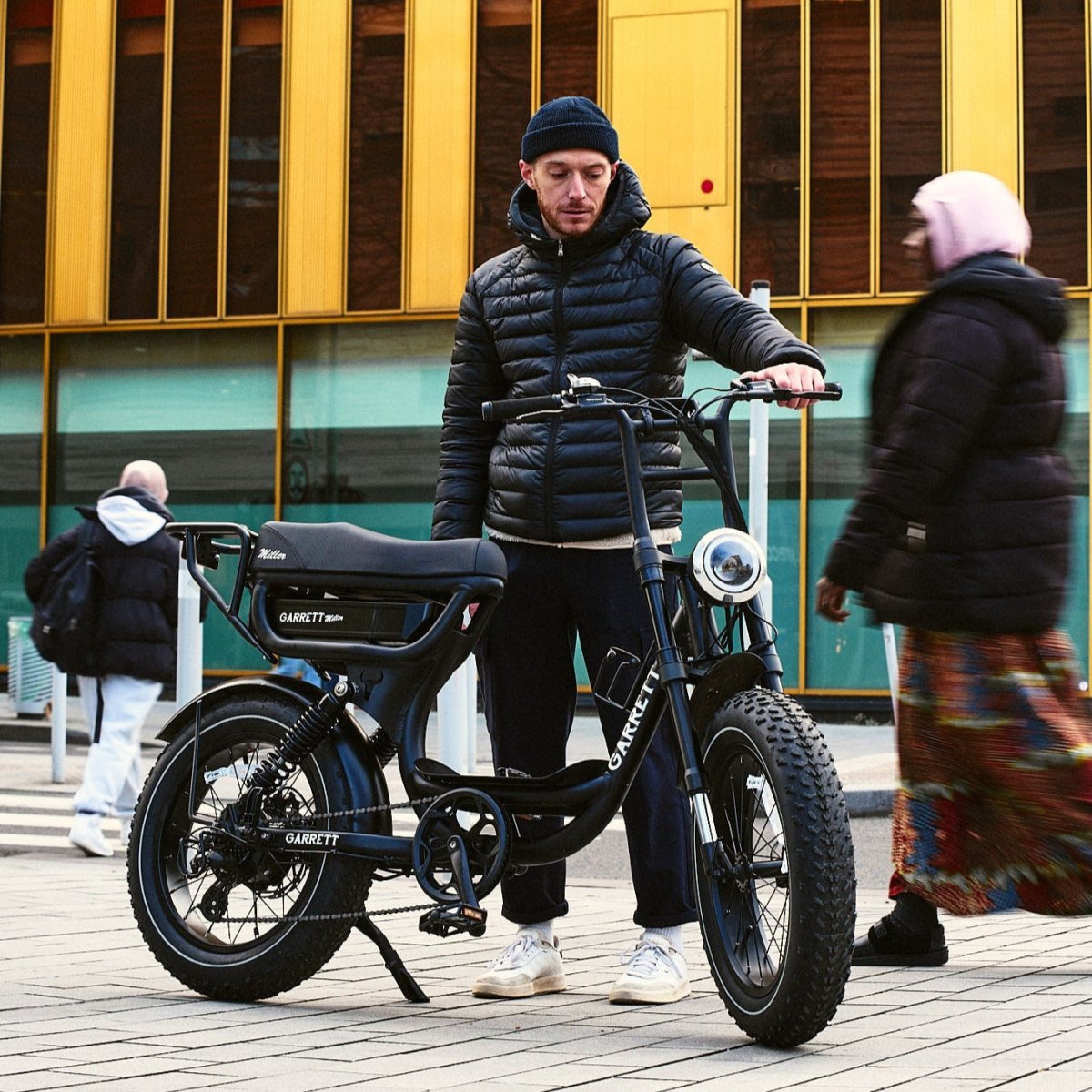Are you afraid of hills when cycling? Did you know that it is entirely possible to climb a hill on an electric bike? Yes, thanks to pedal assistance, there's no need to drain your energy reserves to reach the top. But to get the most out of it, you need to know the right settings and adopt the proper technique when you mount your electric bike. We guide you on choosing the equipment, the right habits, and the mistakes to avoid.
Why is an electric bike the ideal ally for climbing?
Climbs are often the nightmare of cyclists. Fortunately, the electric bike changes the game. Thanks to its pedal assistance, even the steepest hills become accessible. To understand why this technology makes ascents so much easier, let's look at how it works and the advantages it offers on the ground.

How does electric assistance work on hills?
As soon as you pedal, the electric bike motor activates thanks to a pedal or torque sensor. This sensor detects either the movement of the pedals or the pressure applied to them and sends the information to the controller that regulates the assistance delivered. The result: you get immediate support as soon as the slope appears.
Advantages compared to a traditional bike
The first difference you will feel is in your legs. No more climbs where you struggle with every pedal stroke! The assistance significantly reduces physical effort, making hills more accessible, even for occasional or less trained cyclists.
Another advantage is pedaling comfort. Thanks to the assistance, you maintain a steady rhythm without having to constantly change position or repeatedly stand up on the pedals.
Finally, the electric bike opens up ascents to a wider audience. Whether you are a beginner, senior, or simply looking for effortless rides, you can now climb hills with confidence.
Which electric bike to choose for climbing hills?
Before tackling the toughest slopes, you need to be well equipped. Not all electric bikes are equal when climbing, and some models are clearly better suited to handle elevation changes. Motor, battery, tires, frame... let's look together at the key elements to prioritize for climbing without struggling.

Mid-drive motor or hub motor: which to choose?
When climbing, the mid-drive motor makes all the difference. Positioned at the center of the frame, it ensures optimal weight distribution and transmits torque directly to the crankset.
Result: a more natural, smooth, and responsive assistance, especially on steep sections. In this category, you can find, for example, the Granville E-Integrated electric bike equipped with a 250W BOSCH Performance mid-drive motor.
Conversely, hub motors (front or rear) quickly show their limits as the slope gets steeper. Less balanced and less efficient on steep hills, they can cause loss of traction and consume more energy, thus reducing the bike's overall range.
What motor power and torque for hills?
To climb confidently, you need a sufficiently powerful motor. Count at least 250W for gentle slopes. If you plan sustained climbs or rough paths, a 500W motor will be much more comfortable.
Regarding motor torque, it determines the pulling force. For hilly areas, 50 Nm is enough. However, when the terrain becomes more challenging, it's ideal to aim for a motor delivering between 60 and 90 Nm, so you never struggle, even when loaded.
Battery: what capacity to tackle long climbs?
The steeper the slope and the longer the journey, the more the battery is stressed. To avoid running out of power mid-ascent, choose a model equipped with a battery of at least 500Wh. This ensures good autonomy even when regularly using high assistance modes.
For long rides and significant elevation gains, a 48V 20Ah battery is essential. It offers the capacity needed to chain several climbs without fearing a dead battery.
Tires and frame: crucial elements
Don't underestimate the importance of tires and frame either. Wide, all-terrain tires provide better grip and prevent slipping on wet or rocky climbs.
For the frame, prioritize lightweight and robust materials like aluminum or carbon. A lighter bike requires less energy to move forward and helps preserve the battery, especially on long ascents.
What techniques and positions to adopt for climbing well on an electric bike?
Even with a electric fat bike or a high-performance model, climbs require some technique. Adopting the right posture and managing your effort well will allow you to climb more easily without exhausting your battery or your legs. Let's look together at the good habits to take to conquer slopes without struggling.

The right posture according to the slope's incline
Posture is crucial to remain effective and stable when climbing. When the slope starts, stay seated on the saddle with your back straight and arms slightly bent. This position helps maintain good balance and limits effort on the upper body.
As the slope steepens, it can be useful to lean your torso slightly forward to better distribute weight and prevent the front wheel from lifting. On the steepest sections, stand up on the pedals to gain power and relieve the motor, but don't stay standing too long to preserve your energy.
Keep your hands well positioned on the top of the handlebars and avoid gripping too tightly to stay relaxed.
Proper use of gears and assistance mode
Anticipation is key. Before approaching a climb, downshift one or two gears to avoid unnecessary strain in the first meters. Pedal smoothly while engaging the assistance mode suited to the difficulty. Generally, Eco or Tour mode is enough for gentle slopes and false flats.
As soon as the slope becomes serious, don't hesitate to switch to Sport or Turbo mode for maximum support. Remember to return to a more moderate level once the summit is reached to save your battery and enjoy gentler assistance.
Pedaling cadence and breathing
To climb efficiently, aim for a pedaling cadence between 70 and 90 revolutions per minute. A cadence too low unnecessarily tires muscles and the motor, while a cadence too high drains the battery without real benefit.
Regarding breathing, adopt deep and regular belly breathing. Inhale through the nose and exhale through the mouth, syncing your breath with your pedaling cadence. This technique helps better oxygenate your muscles and limit breathlessness, especially on long ascents.


Practical advice and mistakes to avoid when climbing with an electric bike
Climbing a hill on an electric bike requires some preparation and good habits. Incorrect tire pressure, forgetting to charge, or improper use of assistance can quickly ruin your ride. Here are our tips to avoid troubles and fully enjoy your climbs.

Check tire pressure and battery charge
Before each ride, remember to check your tire pressure. An underinflated tire increases rolling resistance and unnecessarily strains the motor when climbing. Adjust pressure according to your terrain: between 0.30 and 0.80 bar for trails, a bit more on roads.
The same goes for the battery. Make sure it is fully charged before starting a hilly route. Climbs demand more from the assistance and can drain your battery much faster than flat terrain.
Use assistance wisely to preserve autonomy
Electric assistance is valuable but must be used strategically. Stay in Eco or Tour mode on flat sections and small hills. Only switch to Sport or Turbo mode when the slope really toughens.
Avoid unnecessarily using high assistance levels. On climbs, pace your effort and don't hesitate to reduce assistance once the summit is reached to preserve the battery and extend your range.
FAQ
Can you climb a very steep hill using only assistance without pedaling?
No, the electric assistance of an e-bike (electric assisted bike) only activates if you pedal. It is not an autonomous motor like on a scooter. Regulations require the motor to activate only in accompaniment of pedaling.
Is special motor maintenance needed after many climbs?
Not necessarily, but frequent climbs put more strain on the motor and transmission. Remember to regularly check the chain, sprockets, and motor temperature after a long ascent. More frequent cleaning and lubrication are recommended.
Can I install a more powerful motor on my electric bike to climb better?
Technically possible, but strongly discouraged without expertise. Modifying the motorization can make the bike non-compliant with legislation (250W and 25 km/h max in France), cause premature wear of components, and pose insurance issues.
Are full-suspension electric bikes better for climbing?
Not necessarily. Suspensions are useful on rough terrain but can reduce pedaling efficiency on rolling climbs. However, on technical uphill trails, a full-suspension bike can offer more traction and comfort.
Conclusion
As you have understood, to climb hills on an electric bike without difficulty, you need to rely on the right equipment and adopt good habits. A powerful mid-drive motor, a generous battery, and suitable tires make all the difference. Add to that intelligent management of gears and assistance, not forgetting an effective posture, and slopes will no longer be a problem.
Want to equip yourself? Discover now our selection of powerful and versatile electric bikes on Weebot and set off to conquer the terrain effortlessly!

